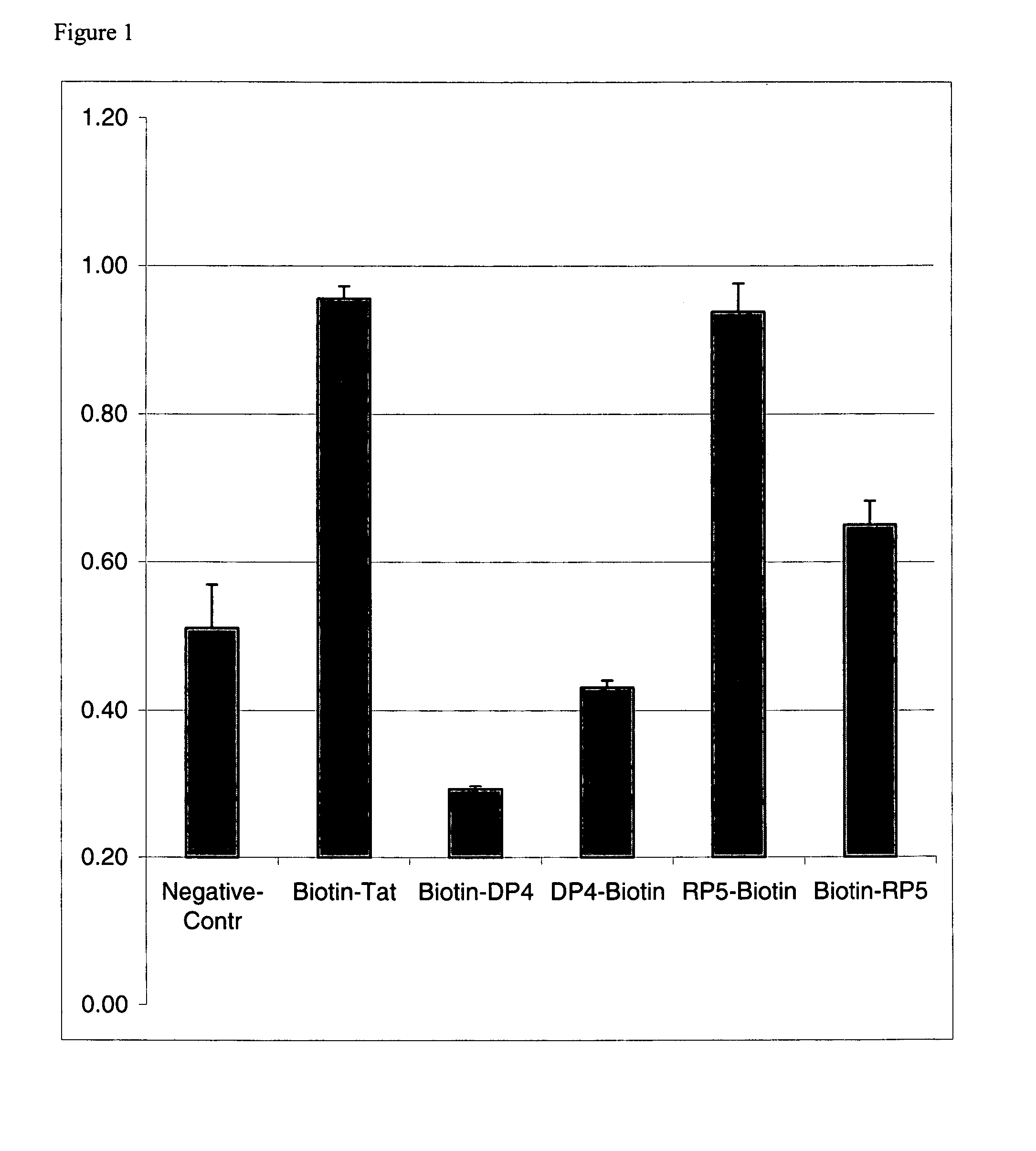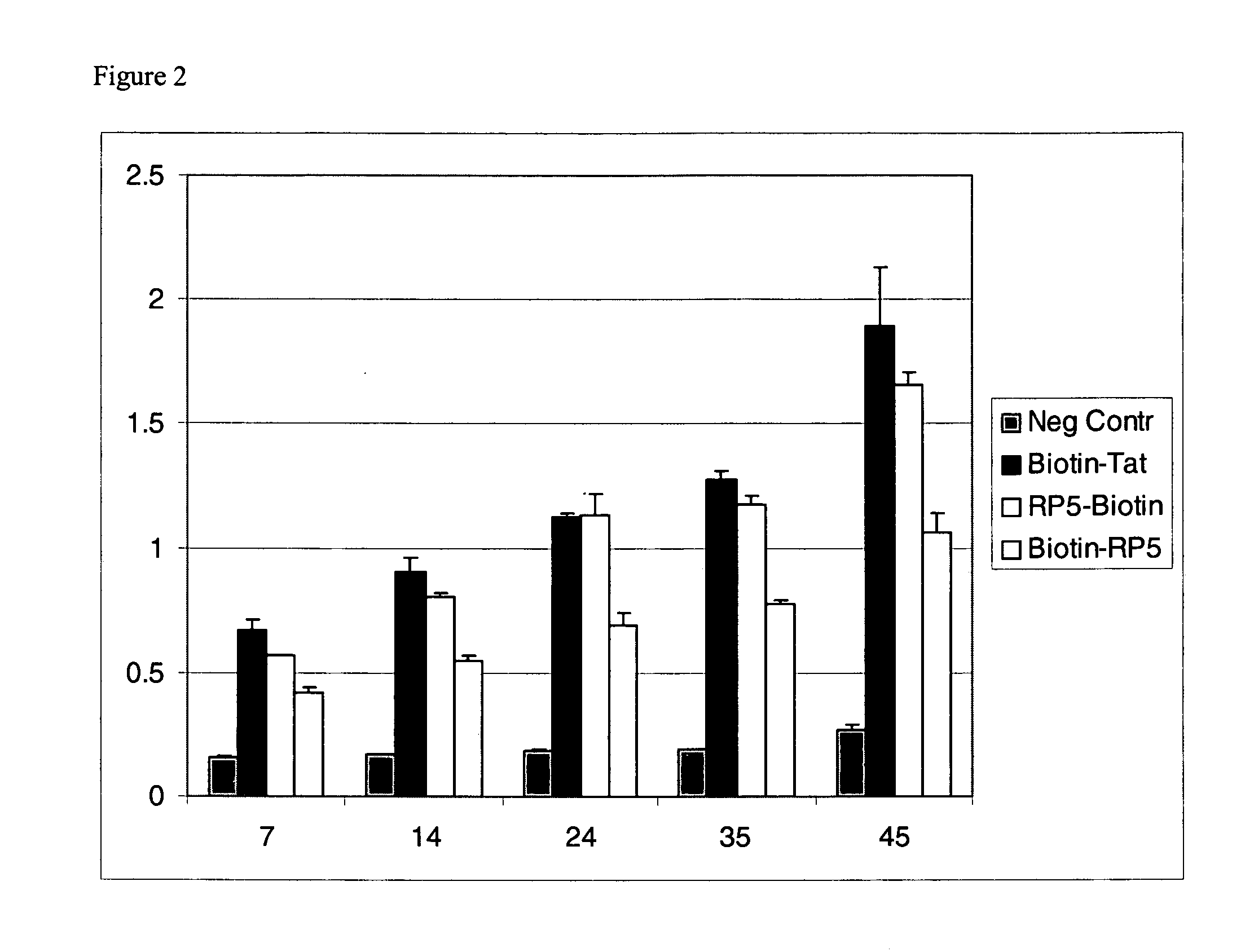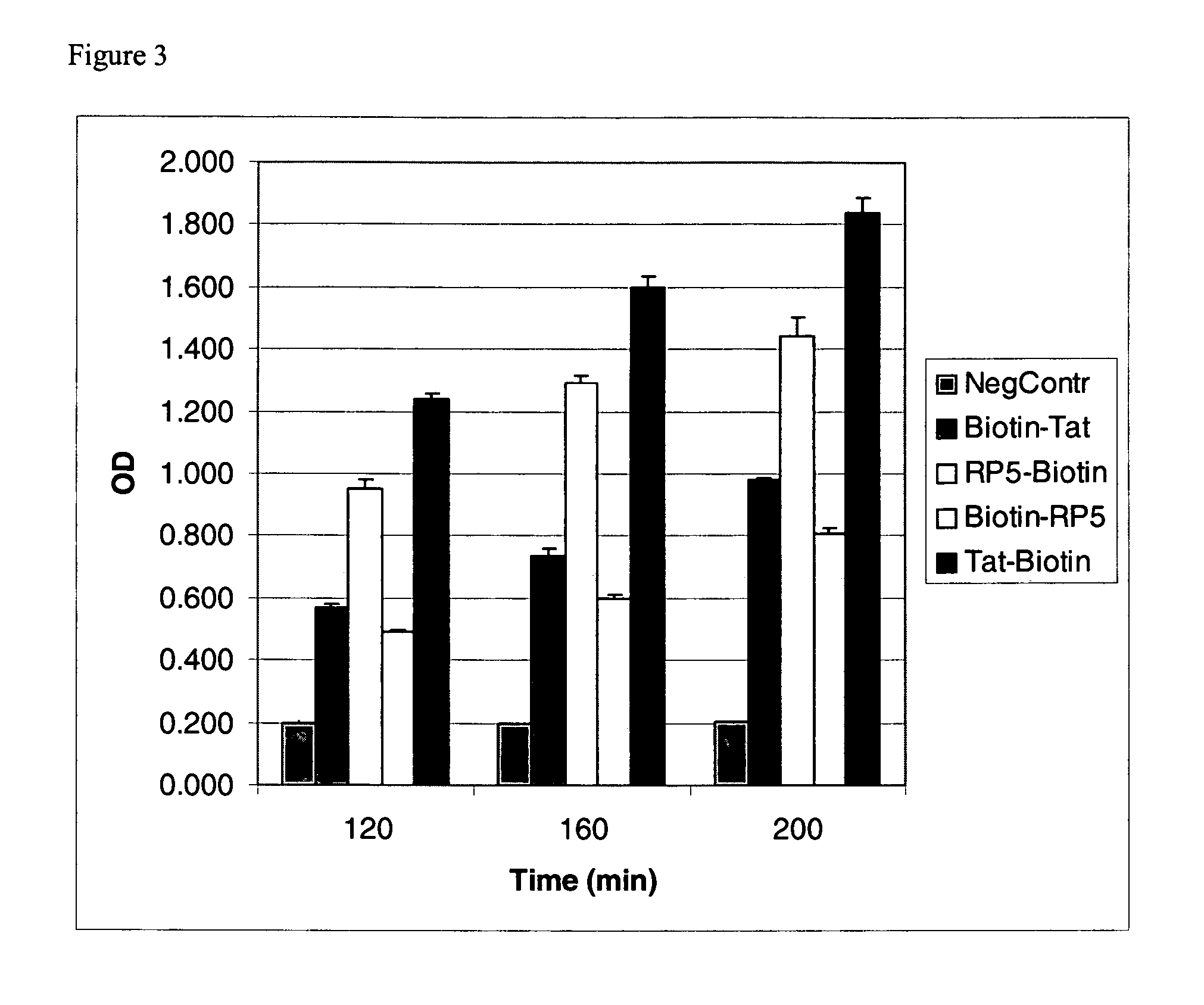Intracellular delivery of small molecules, proteins, and nucleic acids
a technology of nucleic acids and small molecules, applied in the field of peptides, can solve the problems of inability to deliver small molecules, few cells receiving small molecules, and inability to use current reagents and methods, and achieve the effect of higher transduction efficiency
- Summary
- Abstract
- Description
- Claims
- Application Information
AI Technical Summary
Benefits of technology
Problems solved by technology
Method used
Image
Examples
example 1
Effect of Biotin Location on PTD Transduction Efficiency
[0082]To determine the effect of biotin location on transduction efficiency, biotin was added to either the amino terminus or the carboxy terminus of three PTDs. A (Gly)3 linker was added to the amino terminus for N-terminal biotinylated peptides. For C-terminal biotinylation, the last glycine in the C-terminal linker was replaced by lysine. The side chain of lysine was used for the attachment of the biotin group. A peptide with negligible transduction activity (Mi et al., Mol. Ther., 2:339–347, 2000) (SEQ ID NO:6) was used as a negative control. The amino acid sequences of the PTDs and the biotin locations tested are listed in Table 1. PTDs and β-galactosidase were complexed together with a streptavidin-biotin bridge.
[0083]
TABLE 1Biotin-Gly-Gly-Ala-Arg-Pro-Leu-Glu-(SEQ ID NO:6)His-Gly-Ser-Asp-Lys-Ala-Thr(Negative Control)Biotin-Gly-Gly-Gly-Tyr-Gly-Arg-Lys-(SEQ ID NO:7)Lys-Arg-Arg-Gln-Arg-Arg-Arg(Biotin-Tat)Tyr-Gly-Arg-Lys-Lys-...
example 2
Peptide Transduction into Primary Cells
[0086]The ability of the PTDs to translocate β-galactosidase into human primary (HUVEC) cells was investigated. The transduction efficiency as a function of time exposure to the PTD-β-galactosidase complexes was also analyzed.
[0087]To test for transduction efficiency, HUVEC cells were seeded into a 96-well plate as described in Example 1. PTD-β-galactosidase complexes were prepared as described in Example 1. Each complex was added to a final concentration of 50 nM to the wells of the 96-well plate. The cells were incubated for 7, 14, 24, 35, or 45 minutes at 37° C. before being washed 3 times with PBS. Following the last PBS wash, the cells were lysed with 100 μl of assay reagent (Pierce) and incubated at 37° C. for 30 minutes. The lysis reaction was stopped by adding 150 μl stop solution (Pierce), and the absorbance at 405 nm was measured on a Wallac Victor spectroluminometer. The results are shown in FIG. 2.
[0088]FIG. 2 shows that primary HUV...
example 3
Effects of Temperature on Transduction Efficiency
[0090]The activity of the PTD-β-galactosidase complexes was compared at 4° C., room temperature (RT), and 37° C. to analyze the effects of temperature on the transduction efficiency. HUVEC cells were cultured as described in Example 2, and PTD-β-galactosidase complexes (described in Example 1) were added to the cultures at 50 nM final concentration. Following addition of the PTD-β-galactosidase complexes, the cells were incubated for 30 minutes at the specified temperature. The cells were washed and lysed as described above. The lysis reaction was stopped, and the absorbance at 405 nm was measured. The results are shown in FIG. 4. FIG. 4 shows that the transduction activity of the PTDs is independent of temperature.
PUM
| Property | Measurement | Unit |
|---|---|---|
| temperature | aaaaa | aaaaa |
| temperature | aaaaa | aaaaa |
| chemical | aaaaa | aaaaa |
Abstract
Description
Claims
Application Information
 Login to View More
Login to View More - R&D
- Intellectual Property
- Life Sciences
- Materials
- Tech Scout
- Unparalleled Data Quality
- Higher Quality Content
- 60% Fewer Hallucinations
Browse by: Latest US Patents, China's latest patents, Technical Efficacy Thesaurus, Application Domain, Technology Topic, Popular Technical Reports.
© 2025 PatSnap. All rights reserved.Legal|Privacy policy|Modern Slavery Act Transparency Statement|Sitemap|About US| Contact US: help@patsnap.com



